Push Pull Legs: The Ultimate Workout Plan for Building Muscle
Ever feel like you’re not getting anywhere in your fitness journey? The push pull legs (PPL) method could be your game-changer. It’s not just another fitness trend. It’s a scientifically backed plan that targets muscle groups for growth and efficiency.
Push pull legs is more than just a workout plan. It’s a detailed way to build muscle by focusing on different movement patterns. By dividing your workouts into push, pull, and leg days, each muscle group gets the best recovery and training.
This method is for everyone, from beginners to advanced athletes. It helps you build strength, increase muscle, or boost your fitness. It’s a roadmap to reaching your fitness goals, focusing on compound exercises.
Table of Contents
Key Takeaways
- Push pull legs maximizes muscle group training efficiency
- Suitable for all fitness levels from beginners to advanced athletes
- Allows for strategic muscle recovery and consistent training
- Focuses on compound movements for comprehensive muscle development
- Provides flexibility in workout frequency and intensity
Understanding Push Pull Legs Training Split
The Push Pull Legs (PPL) training split is a powerful way to build muscle. It divides your workout into three main types. This helps target specific muscles and allows for better recovery.
- Push exercises target chest, shoulders, and triceps.
- Pull exercises focus on back, traps, and biceps.
- Leg workouts concentrate on lower body muscles.
Benefits of PPL Training
PPL training has many benefits. It helps target muscles well and allows for enough rest. By grouping exercises, you can:
- Boost muscle growth.
- Avoid overtraining.
- Ensure balanced muscle development.
Who Should Try PPL Workouts
PPL workouts suit many fitness levels. Beginners can start with a 3-day split. More experienced lifters might prefer a 6-day routine. PPL helps build muscle, increase strength, or boost fitness, tailored to your needs.
Optimal Training Frequency
The best PPL training frequency varies by experience. Most find success with:
- Beginners: 3-day split (each muscle group trained once weekly)
- Intermediate lifters: 4-5 day split
- Advanced athletes: 6-day intensive routine
“The key to successful strength training is not just hard work, but smart work.” – Dr. Milo Wolf
Remember, the goal of leg workouts and strength training is to grow muscles. Listen to your body, rest well, and keep pushing to see great results.
The Science Behind Muscle Growth and Recovery
Understanding muscle growth is key for fitness and bodybuilding fans. It’s not just about lifting weights. It’s a complex process that needs the right training and rest.
Muscle protein synthesis is the main driver of muscle growth. When you do powerlifting or intense workouts, you damage muscle fibers. Your body then fixes and grows these fibers, making them stronger and bigger.
“Muscle growth occurs during rest, not during the workout itself.”
The idea of progressive overload is vital for muscle growth. It means you need to keep pushing your muscles harder with more weight, more often. Studies reveal some interesting facts:
- Training a muscle 2-4 times a week can increase muscle size by 6.8%
- Most people see the best results with 12-18 sets per muscle group each week
- The best workout time is usually 45-60 minutes
Recovery is just as important as training for muscle growth. Your muscles grow when you’re resting, not when you’re working out. Getting enough sleep, eating right, and planning your workouts well are crucial for growth and avoiding burnout.
Essential Equipment for Push Pull Legs
Creating a good workout routine needs the right tools. Whether you’re at a gym or working out at home, picking the right gear is key. It helps you get the most out of your push pull legs (PPL) program.
What you need depends on where you work out. Let’s look at the must-haves for both gym and home setups.
Gym Equipment Requirements
A good gym offers many options for your workouts. You’ll need:
- Adjustable weight bench
- Barbell and weight plates
- Dumbbells of various weights
- Cable machine
- Pull-up bar
- Squat rack
Home Workout Alternatives
You can still work out at home even with less gear. Here are some affordable options:
- Resistance bands
- Adjustable dumbbells
- Doorway pull-up bar
- Bodyweight exercises
Recommended Workout Gear
Boost your workout with these extra items:
- Weightlifting belt for core support
- Lifting straps
- Comfortable cross-training shoes
- Padded lifting gloves
“The right equipment can transform your resistance training from good to exceptional.” – Fitness Expert
Success in your workout routine isn’t just about the gear. It’s also about sticking to it and using the right techniques. Start with what you have and add more as you get better.
Push Day Workout Structure and Exercises
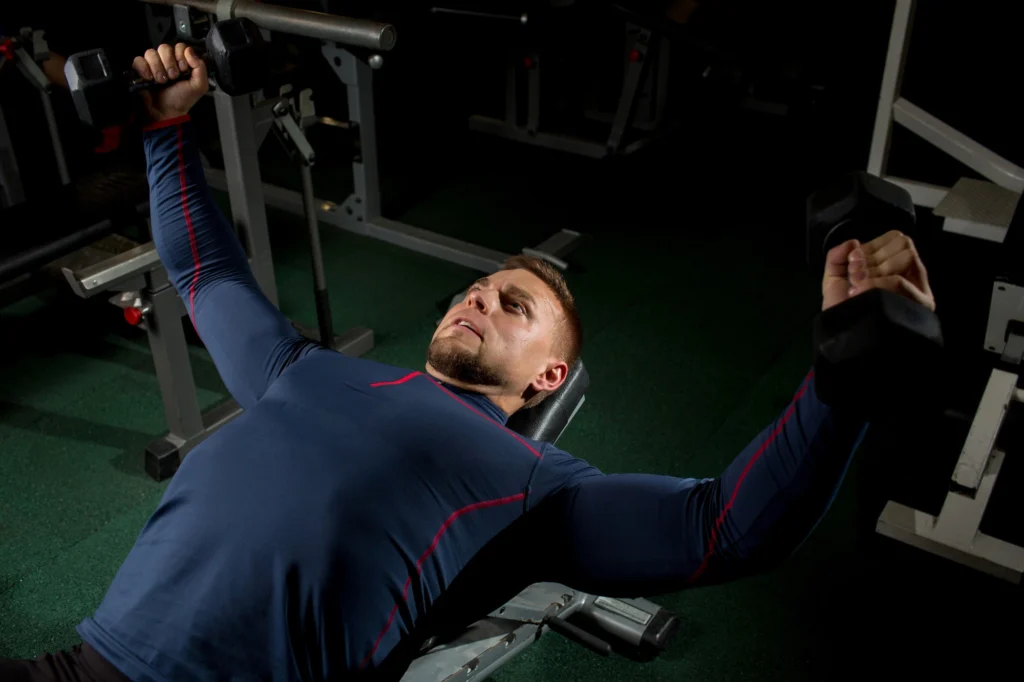
Push day is key in strength training, focusing on chest, shoulders, and triceps. It helps grow muscles by using compound exercises that work many muscles at once.
Your push day workout should mix exercises to challenge your upper body. Choose movements that help grow muscles and boost strength.
- Chest-focused compound exercises
- Shoulder pressing movements
- Tricep isolation work
Beginners do 3-4 exercises with specific sets and reps. More experienced lifters can do 5 exercises, increasing the workout’s intensity. The goal is progressive muscle development through carefully structured training.
Here’s a recommended exercise progression for an effective push day:
- Barbell Bench Press: 4 sets of 8-10 reps
- Overhead Shoulder Press: 4 sets of 8-10 reps
- Incline Dumbbell Press: 3 sets of 10-12 reps
- Tricep Dips: 3 sets of 10-12 reps
- Lateral Raises: 3 sets of 12-15 reps
Proper warm-up is key to avoid injuries. Start with 12-15 reps of resistance band exercises. This activates shoulder muscles and gets your body ready for intense training.
Remember, consistency and proper form are more important than lifting heavy weights.
By sticking to this structured push day workout, you’ll build a strong upper body. It will help grow muscles and improve your fitness.
Mastering Pull Day Exercises
Pull day is a key part of the Push Pull Legs (PPL) workout split. It focuses on your back, traps, and biceps. This lets other muscles rest. Knowing how to do pull day well can really help you grow your muscles.
Pull day exercises work on your back and traps. They help build strength and muscle. It’s important to do a mix of exercises to work many muscles at once.
Back Exercises Guide
Training your back needs both big and small exercises. Your pull day should include:
- Deadlifts: Great for your back and legs
- Pull-ups: Works your back and biceps
- Bent-over rows: Targets your back muscles
- Lat pulldowns: Focuses on your lats
Biceps Training Tips
To grow your biceps, use specific training methods. Try these tips:
- Change your grip on curls
- Use both cable and dumbbells
- Do slow, controlled movements
- Keep proper form to grow your muscles
Form and Technique Basics
Good form is key to avoid injuries and grow muscles. Focus on:
- Keeping your spine straight during exercises
- Controlling the weight all the way
- Using your core in complex moves
| Exercise | Sets | Reps | Primary Muscle Group |
|---|---|---|---|
| Deadlifts | 3-4 | 6-8 | Back, Glutes |
| Pull-ups | 3-4 | 8-12 | Lats, Biceps |
| Seated Cable Rows | 3 | 10-12 | Mid-back |
Remember, being consistent and increasing the weight is important for muscle growth in pull day workouts.
Leg Day Fundamentals and Workout Plan
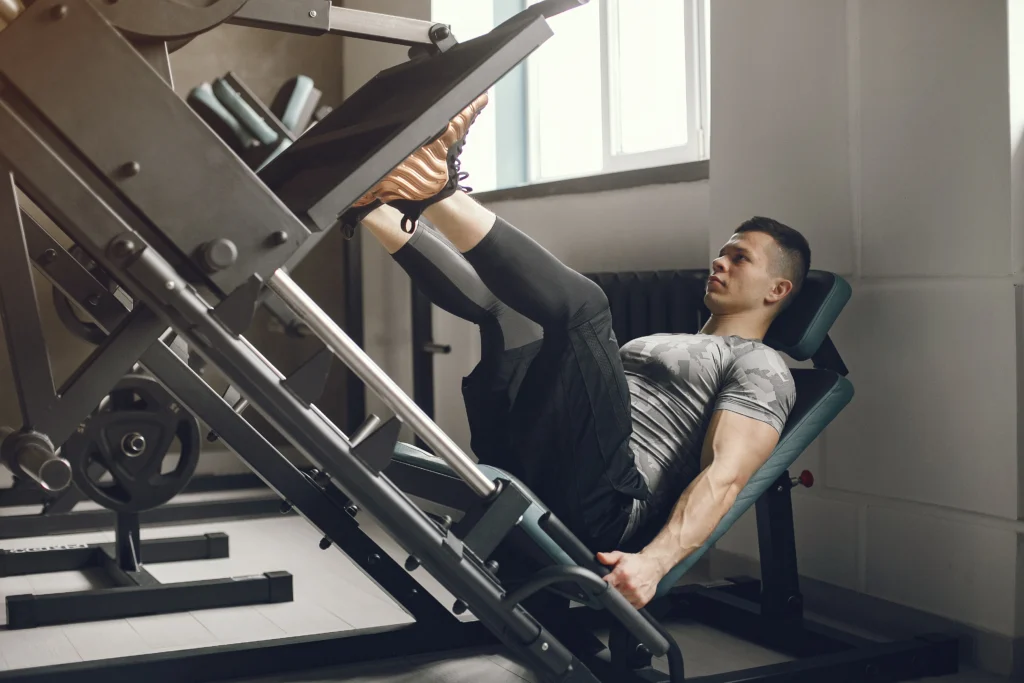
Leg day is key in the push pull legs routine. It targets your lower body’s main muscle groups. Your leg workouts aim to build strength, boost athletic performance, and achieve a balanced look. Compound exercises are at the heart of a good leg training plan.
When doing leg workouts, focus on exercises that work many muscles at once. The main muscle groups you’ll hit include:
- Quadriceps
- Hamstrings
- Glutes
- Calves
Your leg day should mix bilateral and unilateral movements for full muscle growth. Key compound exercises for leg workouts are:
- Barbell Back Squats
- Deadlifts (conventional and sumo variations)
- Lunges
- Romanian Deadlifts
For the best results, plan your leg workout with 3-4 main compound exercises. Beginners should aim for 3 sets of 8-10 reps. Advanced lifters might do a 4-set progression with fewer reps.
Pro tip: Always prioritize proper form over lifting heavy weights to maximize muscle engagement and prevent injury.
A typical leg workout should last 45-60 minutes. This ensures you challenge your muscles and keep movement quality high. Remember, muscle growth happens during rest, so balance intense training with enough rest.
Progressive Overload in Push Pull Legs
Progressive overload is key to growing strong muscles and improving performance. It keeps your workout routine moving forward. By pushing your muscles harder, you avoid hitting a plateau and keep making progress.
To use progressive overload, you need a plan and careful action. The aim is to slowly increase the challenge to your muscles. This helps them grow stronger and perform better.
Weight Progression Methods
There are several ways to increase weight in your workouts:
- Increase weight by 0.5-1 kg per session
- Add 1-2 additional repetitions to each set
- Reduce rest time between sets
- Improve exercise technique for enhanced muscle engagement
Volume Management Strategies
It’s important to manage how much you train to grow muscles well. Advanced lifters should:
- Track total weekly sets per muscle group
- Balance how hard you train and how much you rest
- Change rep ranges based on how you respond
Deload Protocols
Deload weeks are vital to avoid burnout and keep making progress. Cut your workout intensity by 40-50% to let your muscles fully recover. This helps prevent injuries too.
The key to successful progressive overload is listening to your body and making incremental, sustainable improvements.
Nutrition Strategy for Muscle Growth
To grow muscles well, you need a smart nutrition plan. Your diet is key for muscle growth, recovery, and performance. Good nutrition can help you see big gains in muscle size.
Here are some important nutrition tips for muscle growth:
- Protein Intake: Aim for 0.7-1.0 grams of protein per pound of body weight each day
- Calorie Surplus: Eat 250-500 more calories every day
- Meal Timing: Have meals 2-3 hours before and within one hour after working out
Protein is vital for muscle growth. Lean proteins give you the amino acids your muscles need to repair and grow. Some great protein sources are:
- Chicken Breast: 26 grams per 3 oz
- Greek Yogurt: 20 grams per cup
- Salmon: 22 grams per 3 oz
- Eggs: 12 grams per two large eggs
Supplements can also help your fitness journey. Key supplements for muscle growth include:
- Whey Protein: It’s absorbed quickly to help with muscle recovery
- Creatine: Boosts strength and power
- BCAAs: Helps with muscle recovery
Remember, nutrition is the foundation of muscle growth. Consistent, strategic eating paired with proper training will unlock your muscle-building potential.
Staying hydrated is also key for top performance. For workouts under an hour, water is enough. But for longer sessions, you might need electrolyte drinks to keep your muscles growing.
Recovery and Rest Principles
Recovery is key to any good workout, especially in powerlifting. Your muscles grow when you rest, not when you’re working out. Knowing how to recover well can really help you perform better and avoid injuries.
Rest is vital in your workout routine. Each muscle group needs 48-72 hours to recover after intense workouts. This time is crucial for muscle repair and growth.
- Get 7-9 hours of quality sleep nightly
- Practice active recovery techniques
- Use foam rolling for muscle tension release
- Incorporate light stretching on rest days
Professional athletes and powerlifters say rest is essential. Your body needs time to fix muscle damage and refill energy.
| Recovery Method | Duration | Benefits |
|---|---|---|
| Sleep | 7-9 hours | Muscle repair, hormone regulation |
| Foam Rolling | 10-15 minutes | Reduce muscle soreness, improve flexibility |
| Active Recovery | 30-45 minutes | Enhance blood circulation, prevent stiffness |
Pro tip: Listen to your body. Rest is not a sign of weakness but a critical component of muscle growth and performance optimization.
Common Mistakes to Avoid
Starting resistance training with the Push Pull Legs routine can be tricky. Many people make mistakes that slow down their progress. It’s important to know these mistakes and avoid them to grow muscles and improve performance.
One big mistake is not paying attention to form. Many lifters focus on lifting heavy weights instead of doing it right. This can lead to injuries and less muscle work. Always keep the right form, especially in exercises like bench press and squats.
Another common error is not planning workouts well. Beginners might overdo it or not do enough, leading to uneven muscle growth. Plan your workouts carefully, considering how much you do, how hard you push, and how much rest you need. Keep track of your progress and adjust as needed.
Don’t forget the importance of recovery. Not getting enough rest can cause fatigue and injuries. Make sure to sleep well, eat right, and give your muscles time to recover. Your body needs about 48 hours to repair and get stronger, so rest is just as important as working out.

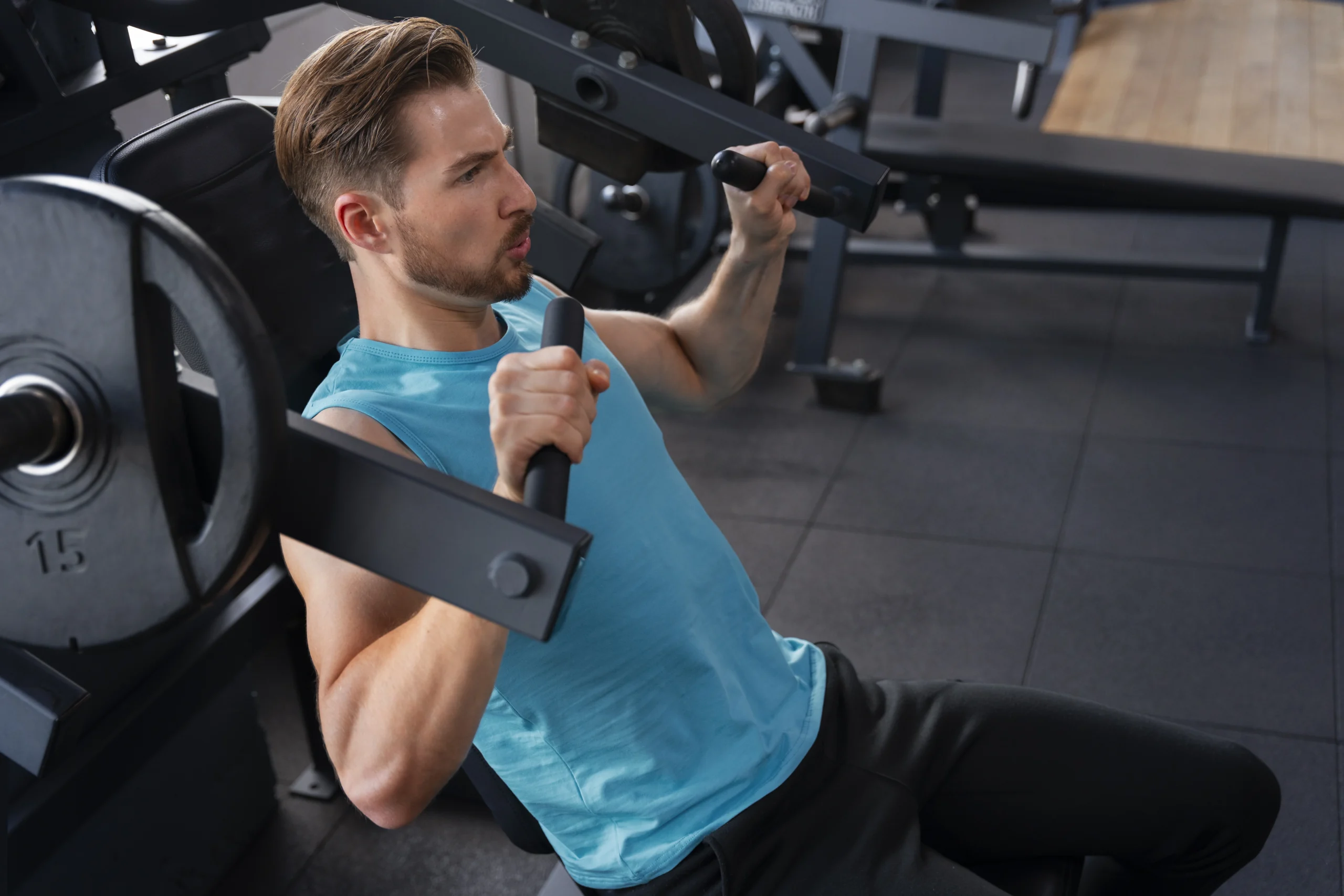
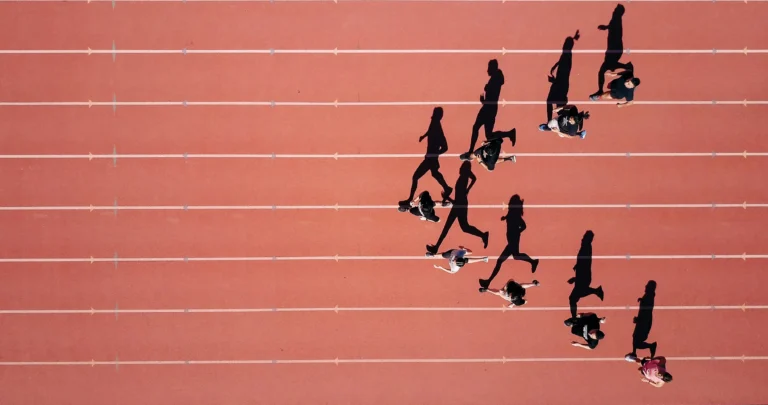
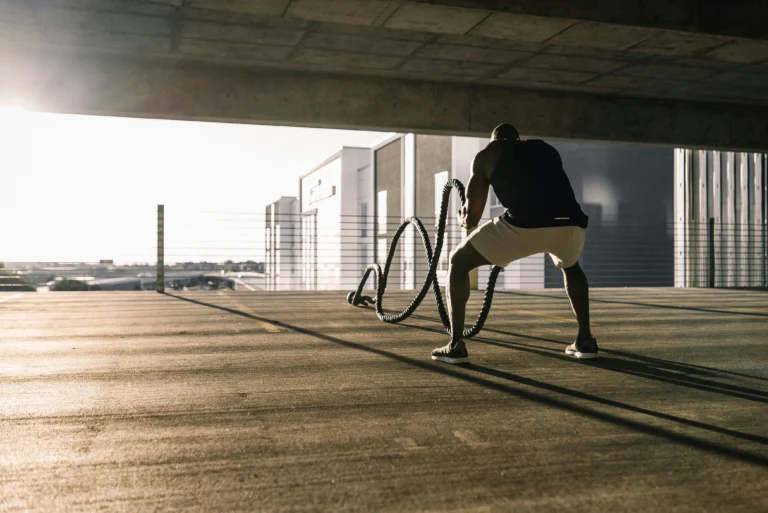
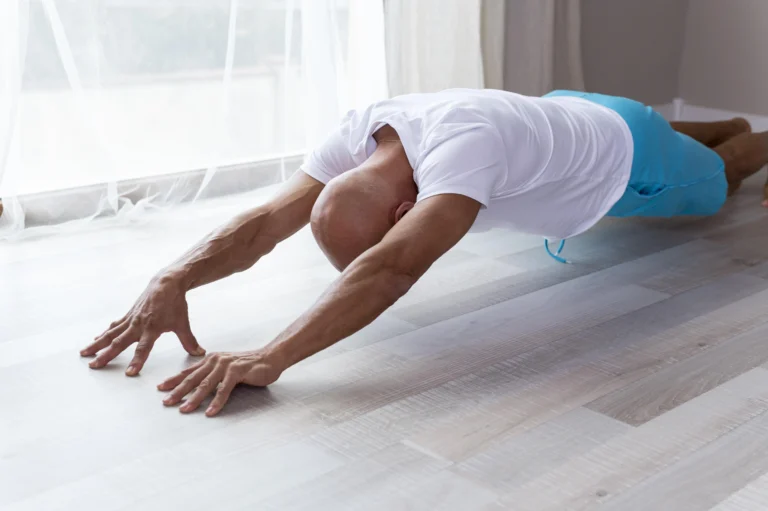
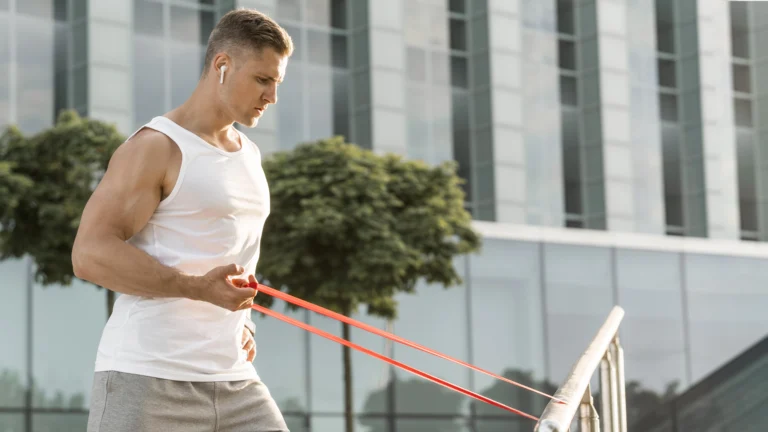
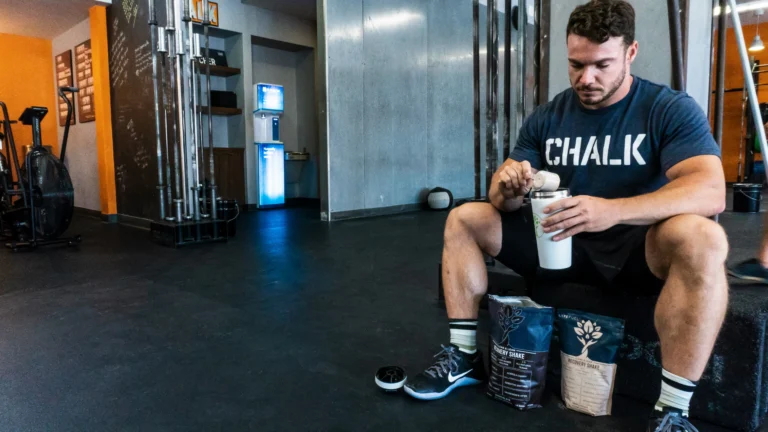
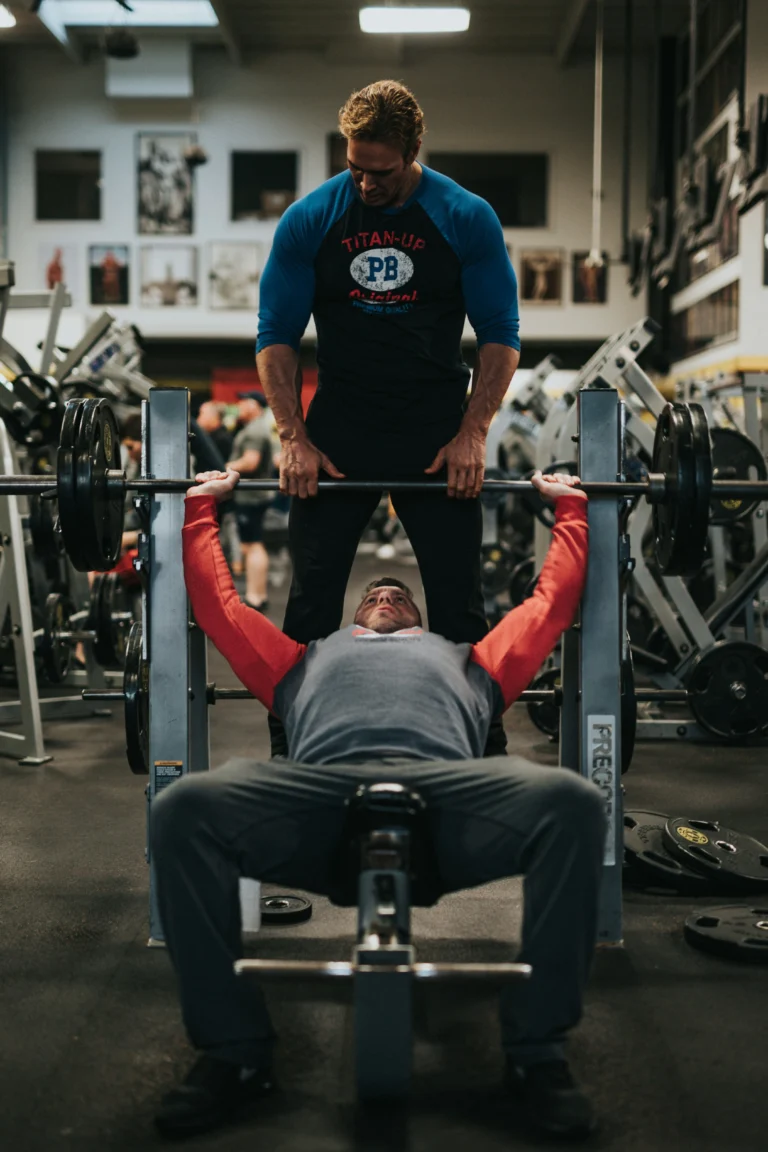
One Comment
Comments are closed.